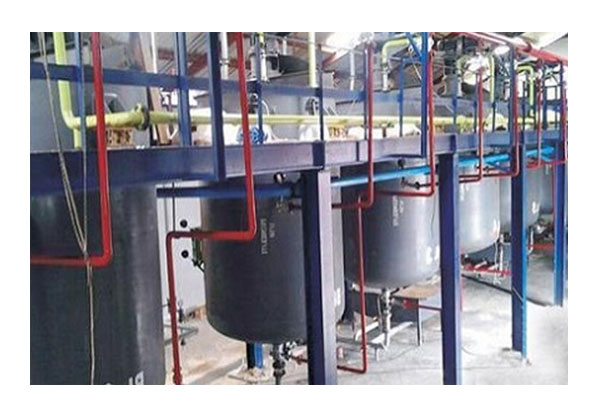ChemSepT offers Design, engineering and supply of lubricants and greases manufacturing plants.
Lube Oil Blending Plants (LOBP) offered by CHEMSEPT are well designed to suit local markets & customer requirements. ChemSepT offer simply manual operated blending plant to highly automated plant to meet client’s requirement.
ChemSepT Supply on Turn Key basis for below Manufacturing Plants:
ChemSepT Lube Oil Blending Plant Process
Lubricating Oil Blending plant involves mixing and blending of bas oil with additives to produce final finished blended lube oil.
Typically Lube Oil Contains:
Blending plants operates on atmospheric pressure & temperature approx. 60-70 Deg. C to enhance blending process. Heating is applied when required to increase the miscibility of base oils & additives. After blending Lube oil transfer to packing & filling section.
A blending plant typically includes five main sections:
All the equipment can be skid mounted. In addition to the key equipment noted above, our capability includes the design and delivery of raw material and finished product storage, transfer and distribution units as well as filling and packaging systems.
Lube Blending Plant Key Equipment:
State-of-the-art equipment has been developed and standardized by CHEMSEPT to meet the specific requirements of the lubricants and greases markets:

Automatic Batch Blender (CSE-ABB)
ChemSepT Automatic Batch Blending (CSE-ABB) system provides an efficient technology to blend Lubricants & Lube Oils in a rage of 3 to 30 m³ per batch. We have developed dedicated solutions and process engineering for lubricants and grease manufacturers, including design, construction and commissioning of automated production plants.
The CSE-ABB unit is typically made of six basic modules:

In-Line Blender (CSE-ILB)
ChemSepT In-Line Blending (CSE-ILB) system is a high throughput production unit which based on real time measuring of liquid components. This isthe continuous mixing technology for large batches. With an economic batch size of more than 55-65 metric tons the use of IN-LINE BLENDERS (CSE-ILB) could be considered as the most beneficial.

Simultaneous Metering Blender (CSE-SMB)
Simultaneous Metered Blending unit (SMB) combines the high volume production capacity of In-Line Blending units (ILB) with operating flexibility of Automatic Batch Blending (ABB). The components are dosed via mass flow meters according to the recipe directly in a homogenization tank. This procedure has the advantage, that a big batch can be quickly dosed into the homogenization tank. When skillfully combining the products at equal dosing times, fewer mass flow meters, pumps and machines are required. Since the product remains in a homogenization tank, it is possible to correct the product with later additional dosing at any time.
